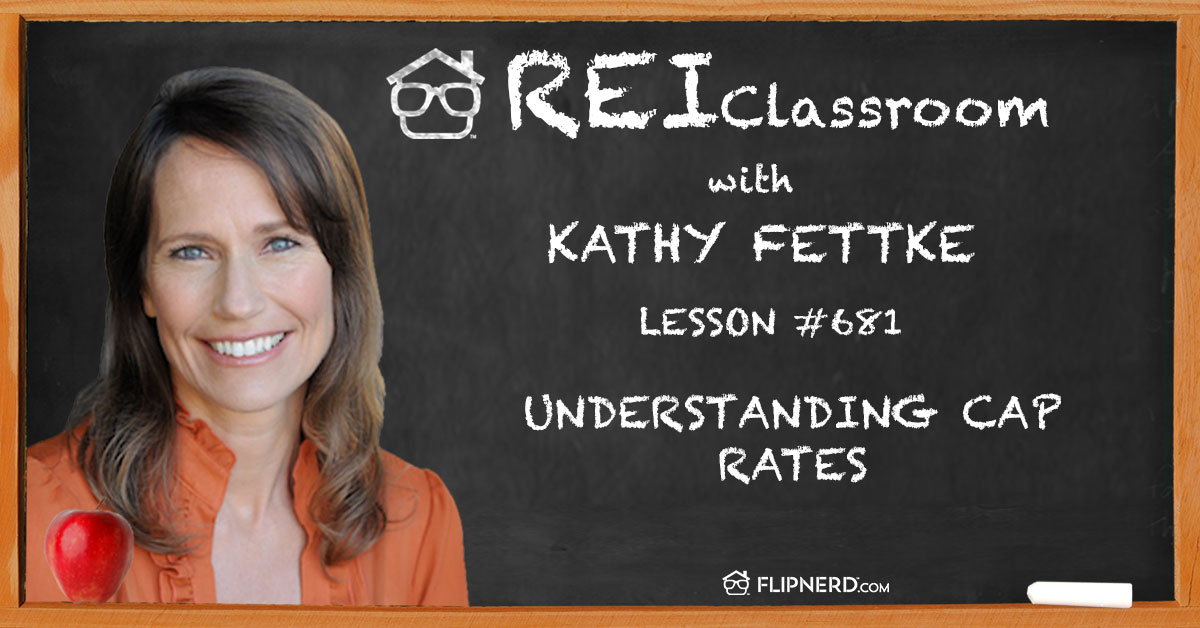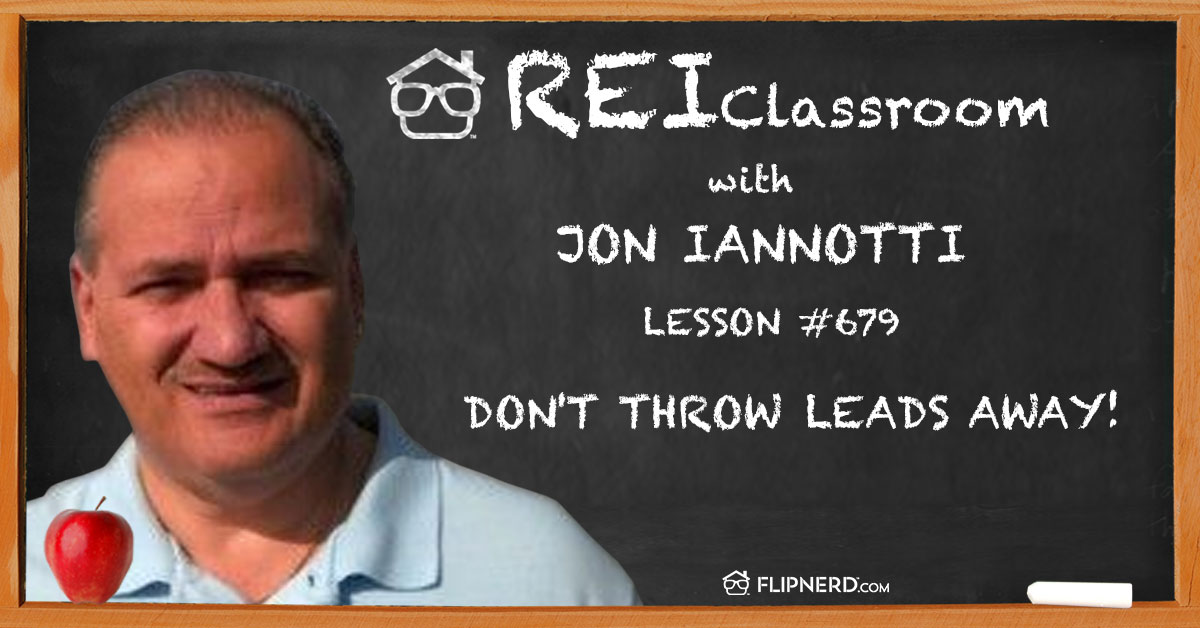Today’s REI Classroom Lesson
In today’s lesson, Tim Norris goes over different types of coverages and an overview of what they cover within rental properties.
REI Classroom Summary
Educating yourself in different types of coverages, add ons, deductibles, and what types of damage is covered can protect you as the property owner.
Listen to this REI Classroom Lesson
Real Estate Investing Classroom Show Transcripts:
Announcer: Welcome back to the FlipNerd.com REI Classroom, where experts from across the real estate investing industry teach you quick lessons to take your business to the next level. And now let’s meet today’s expert host.
Tim: Hey, good afternoon. My name is Tim Norris and I’m the host today for the REI Classroom. I’m the President of a company called National Real Estate Insurance Group. We’re based here in Kansas City, Missouri. I’m going to talk to you a little bit today about knowing your coverages and that not all coverages relative to your insurance needs for your investment properties are the same.
Announcer: This REI Classroom real estate lesson is sponsored by AceBusinessFunding.com.
Tim: One policy may be cheaper than another and more or often or not, that difference in cost is relative to significant, sometimes, difference in coverages.
I’m going to talk a few minutes about different issues that are very, very relevant to that. One of them is what’s known as your policy form. Just know the difference between the policy form, which are known as basic, broad and special. The differences between those three are very simple once you understand them or know the verbiage that typically an insurance company or provider will use.
Basic and broad insurance forms, those are relative to the property coverage that you have, or what are known as named peril forms. What named peril means, unless that which causes the damage is one of the named perils specified in the policy, such as fire or wind, for two examples, and that which causes the damage isn’t covered. In other words, it has to be named to be covered.
The other form, kind of the opposite end of that is what is known as special form. What special form means, not really the opposite, but it really means that unless that which causes the damage is excluded, it is covered.
Special form is also known as all-risk. Now all-risk doesn’t mean everything is covered because we all know that the length in those insurance contracts is not very short; there are quite a few exclusions. But, nonetheless, it is the most comprehensive form of insurance. Some of the exclusions that I’ve mentioned can be bought back. Such as earthquake coverage. Many times you can add earthquake as a rider to your policy if you want to buy it back, or flood insurance. Typically, you have to buy flood insurance separately. But, nonetheless, special form, unless that which causes the damage is excluded, it is covered.
So those three basic . . . not to use the term basic again, but those three forms of property insurance really can create a significant difference in your cost. Basic form, for many insurance providers or companies, is about 30% to 40% less expensive than special form.
Two of the things that basic form does not pick up that many investors want to make sure is covered are theft and water damage. Doesn’t mean you have to cover them, but know that that difference in premium takes away two of those many times considered important coverages. And depending on your appetite for risk, the ability to not carry those coverages, as I just indicated, can save you a significant amount of premium.
If your attitude is you’re not going to file a claim over $10,000 or God forbid the house burns to the ground, then maybe over your 20 investment properties, basic form is the way to go because the significant premium savings it generates by carrying that, if you will, lower level of coverage.
So the point is here to just know your differences between your property forms and understand them, so you can make a cognizant decision about that premium dollar that you want to spend and that which you want to save.
Another thing that’s probably overlooked periodically is your deductible. A deductible is inherently a form of self-insurance. The higher your deductible, typically, the lower your cost. So in other words, the difference in cost between a thousand dollar deductible and the property insurance and a $5,000 deductible may be 10%.
Well, 10% of one house may not be that big of a deal and you may not be willing to take on that additional risk for that 10% savings. But, if you have 40 investment properties, that 10% savings may generate quite a bit of true dollars and cents. Again, it may give you an ability, if you will, to carry that higher deductible, knowing that you’re going to self-insure a little bit more, but take on that additional risk and you’re willing to do that.
My attitude’s always been to self-insure as much as you can handle. In other words, if you can stomach, if you will, a $10,000 loss, then by all means carry at least a $10,000 deductible. Rule of thumb that we’ve used and I’ve used for many, many years is to take the minimum claim you’d ever file and double it. If you wouldn’t file a thousand dollar claim, then don’t carry a thousand dollar deductible. Carry at least a $2,000 or $2,500 deductible.
One of the last points I’ll cover at least in the lesson today is the difference between actual cash value and replacement cost. Actual cash value does not mean market value. Actual cash value simply means that you do not have the ability to recoup the depreciation that’s initially levied in a claim settlement. Replacement cost coverage gives you that ability.
It’s a very short, simple explanation, but that’s the difference. It’s not the difference between your ability to rebuild it and the market value in the property. Actual cash value simply means that you don’t have the ability to recoup the depreciation that the insurance company initially levies against your claim settlement.
That statement, similar to the basic broad and special forms and a higher deductible, your ability and willingness to take on additional risk could give you the ability to enjoy, if you will, when you’re using the word insurance, to enjoy a little bit more savings than you normally would. The more you take on risk-wise, the more you’re going to save. That’s about it for today, folks. We’ll see you next time on the REI Classroom.
Announcer: AceBusinessFunding.com can help you get access to up to $150,000 in revolving credit lines to fund your business with rates as low as 0% for the first 12 to 18 months. Use the funds for start-up costs, marketing, inventory. Heck, you can even use it to buy houses and pay for rehabs or almost anything else that your business needs. If they can’t get you funding, you don’t pay a dime. Get funds for your business today at AceBusinessFunding.com.
Please note the views and opinions expressed by the individuals in this program do not necessarily reflect those of FlipNerd.com or any of its partners, advertisers or affiliates. Please consult professionals before making any investment or tax decisions, as real estate investing can be risky.
Are you a member yet of FlipNerd.com, the hottest real estate investing social community online? If not, you can join for free in less than 30 seconds and get access to hundreds of off-market deals, vendors in your market to help you in your business and you can start networking with thousands of other investors just like you. Get your free account now at FlipNerd.com.
Please check out the FlipNerd family of real estate investing shows, where we host four great ongoing shows at FlipNerd.com/shows. Or simply search for “FlipNerd” in the iTunes Store.
Tim: Hey, good afternoon. My name is Tim Norris and I’m the host today for the REI Classroom. I’m the President of a company called National Real Estate Insurance Group. We’re based here in Kansas City, Missouri. I’m going to talk to you a little bit today about knowing your coverages and that not all coverages relative to your insurance needs for your investment properties are the same.
Announcer: This REI Classroom real estate lesson is sponsored by AceBusinessFunding.com.
Tim: One policy may be cheaper than another and more or often or not, that difference in cost is relative to significant, sometimes, difference in coverages.
I’m going to talk a few minutes about different issues that are very, very relevant to that. One of them is what’s known as your policy form. Just know the difference between the policy form, which are known as basic, broad and special. The differences between those three are very simple once you understand them or know the verbiage that typically an insurance company or provider will use.
Basic and broad insurance forms, those are relative to the property coverage that you have, or what are known as named peril forms. What named peril means, unless that which causes the damage is one of the named perils specified in the policy, such as fire or wind, for two examples, and that which causes the damage isn’t covered. In other words, it has to be named to be covered.
The other form, kind of the opposite end of that is what is known as special form. What special form means, not really the opposite, but it really means that unless that which causes the damage is excluded, it is covered.
Special form is also known as all-risk. Now all-risk doesn’t mean everything is covered because we all know that the length in those insurance contracts is not very short; there are quite a few exclusions. But, nonetheless, it is the most comprehensive form of insurance. Some of the exclusions that I’ve mentioned can be bought back. Such as earthquake coverage. Many times you can add earthquake as a rider to your policy if you want to buy it back, or flood insurance. Typically, you have to buy flood insurance separately. But, nonetheless, special form, unless that which causes the damage is excluded, it is covered.
So those three basic . . . not to use the term basic again, but those three forms of property insurance really can create a significant difference in your cost. Basic form, for many insurance providers or companies, is about 30% to 40% less expensive than special form.
Two of the things that basic form does not pick up that many investors want to make sure is covered are theft and water damage. Doesn’t mean you have to cover them, but know that that difference in premium takes away two of those many times considered important coverages. And depending on your appetite for risk, the ability to not carry those coverages, as I just indicated, can save you a significant amount of premium.
If your attitude is you’re not going to file a claim over $10,000 or God forbid the house burns to the ground, then maybe over your 20 investment properties, basic form is the way to go because the significant premium savings it generates by carrying that, if you will, lower level of coverage.
So the point is here to just know your differences between your property forms and understand them, so you can make a cognizant decision about that premium dollar that you want to spend and that which you want to save.
Another thing that’s probably overlooked periodically is your deductible. A deductible is inherently a form of self-insurance. The higher your deductible, typically, the lower your cost. So in other words, the difference in cost between a thousand dollar deductible and the property insurance and a $5,000 deductible may be 10%.
Well, 10% of one house may not be that big of a deal and you may not be willing to take on that additional risk for that 10% savings. But, if you have 40 investment properties, that 10% savings may generate quite a bit of true dollars and cents. Again, it may give you an ability, if you will, to carry that higher deductible, knowing that you’re going to self-insure a little bit more, but take on that additional risk and you’re willing to do that.
My attitude’s always been to self-insure as much as you can handle. In other words, if you can stomach, if you will, a $10,000 loss, then by all means carry at least a $10,000 deductible. Rule of thumb that we’ve used and I’ve used for many, many years is to take the minimum claim you’d ever file and double it. If you wouldn’t file a thousand dollar claim, then don’t carry a thousand dollar deductible. Carry at least a $2,000 or $2,500 deductible.
One of the last points I’ll cover at least in the lesson today is the difference between actual cash value and replacement cost. Actual cash value does not mean market value. Actual cash value simply means that you do not have the ability to recoup the depreciation that’s initially levied in a claim settlement. Replacement cost coverage gives you that ability.
It’s a very short, simple explanation, but that’s the difference. It’s not the difference between your ability to rebuild it and the market value in the property. Actual cash value simply means that you don’t have the ability to recoup the depreciation that the insurance company initially levies against your claim settlement.
That statement, similar to the basic broad and special forms and a higher deductible, your ability and willingness to take on additional risk could give you the ability to enjoy, if you will, when you’re using the word insurance, to enjoy a little bit more savings than you normally would. The more you take on risk-wise, the more you’re going to save. That’s about it for today, folks. We’ll see you next time on the REI Classroom.
Announcer: AceBusinessFunding.com can help you get access to up to $150,000 in revolving credit lines to fund your business with rates as low as 0% for the first 12 to 18 months. Use the funds for start-up costs, marketing, inventory. Heck, you can even use it to buy houses and pay for rehabs or almost anything else that your business needs. If they can’t get you funding, you don’t pay a dime. Get funds for your business today at AceBusinessFunding.com.
Please note the views and opinions expressed by the individuals in this program do not necessarily reflect those of FlipNerd.com or any of its partners, advertisers or affiliates. Please consult professionals before making any investment or tax decisions, as real estate investing can be risky.
Are you a member yet of FlipNerd.com, the hottest real estate investing social community online? If not, you can join for free in less than 30 seconds and get access to hundreds of off-market deals, vendors in your market to help you in your business and you can start networking with thousands of other investors just like you. Get your free account now at FlipNerd.com.
Please check out the FlipNerd family of real estate investing shows, where we host four great ongoing shows at FlipNerd.com/shows. Or simply search for “FlipNerd” in the iTunes Store.










